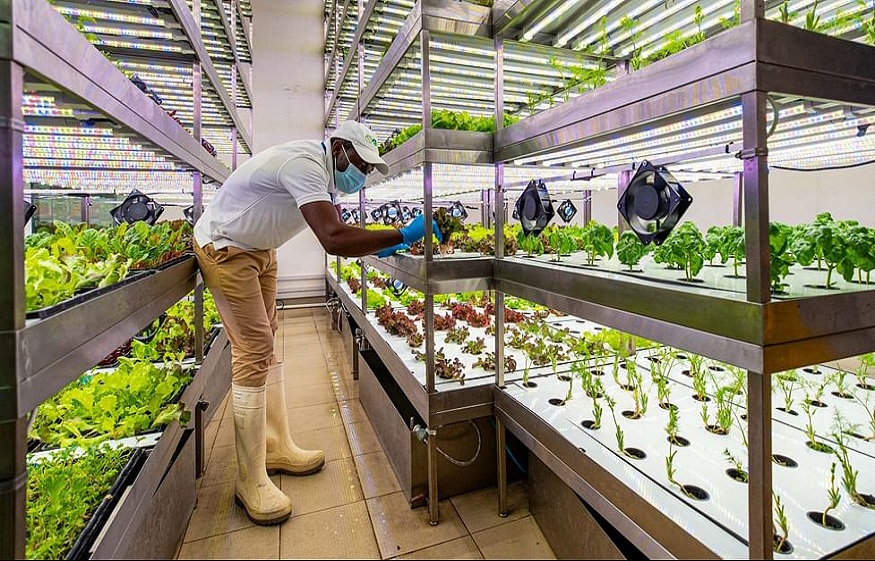Vertical farming has witnessed enormous growth in many nations throughout the world, including India, due to the technology’s promise to solve one of the world’s most important problems: food security. These vertical farms might be built in densely populated locations, supplying fresh, healthful produce to millions of citizens throughout the year, regardless of climatic conditions.Multiple startups and vertical farming enterprises are already active in India, seeking to provide locally grown produce to large cities.
According to Market Data Forecast, the Asia Pacific area is one of the most lucrative markets for vertical farming, with the industry expected to reach $2.77 billion by 2026, representing a 29 percent growth rate. The value of vertical farming in Asia Pacific is presently $0.78 billion (as of 2021). According to the report, India’s need to feed a burgeoning population and the fast-increasing demand for organic products would fuel vertical farming’s continuous growth and innovation in the region. Furthermore, vertical farming is rapidly gaining traction in India, with even more startups and businesses joining the industry each year.
With a population of 1.27 billion people, India is the world’s second-most populated country; nevertheless, the National Commission on Population (NCP) projects that by 2036, India’s population would have grown by 25%. When this is combined with climate change, securing the country’s food security becomes even more difficult. Despite the fact that India’s agriculture is self-sufficient in terms of food, the country nonetheless has a fifth of the world is hungry. Horizontal farming in India is resource-intensive due to overuse of water, fertilizers, and pesticides.
Another source of concern is land shortage, which is exacerbated by soil degradation and desertification in the country. Many of the challenges that the Indian agriculture sector is currently facing can be solved with vertical farming, which is a cost-effective and long-term solution.However, constructing a vertical farm in India could be problematic due to the country’s frequent power outages, which could also lead to severe losses if not addressed quickly. Vertical farms can develop backup energy systems as a substitute to the primary energy system, however this may raise their upfront costs. Vertical farming has a lot of potential, particularly in drought-prone districts, because it may help alleviate food shortages and provide communities with fresh produce.
In India, a number of national and international conferences are conducted to introduce new technology in the field of indoor agriculture and to raise awareness about the advantages of vertical farming. Some of the most significant conferences in the vertical farming field are organized by the Association for Vertical Farming in India (AV) and the Institute for Horticulture Technology in India (IHT).
UrbanKisaan, Clover, Living Food Company, Triton Foodworks, UGF (Urban Green Fate) Farms, and Barton Breeze are some of the local vertical farming enterprises in India right now. These businesses are entirely headquartered in India and provide vertically grown products such as turmeric, microgreens, lettuce, chards, and herbs to the local market.Soil degradation, desertification, and extreme weather events such as floods and droughts are all threats to India’s agricultural production. Alternative agricultural methods, such as vertical farming, are becoming more popular as a result.

